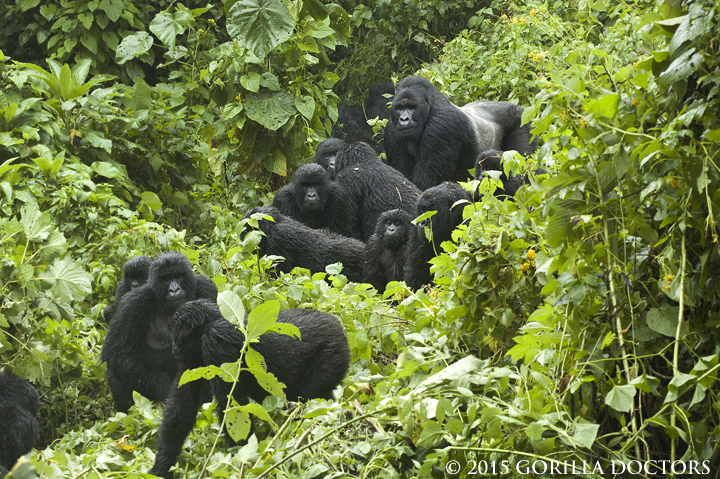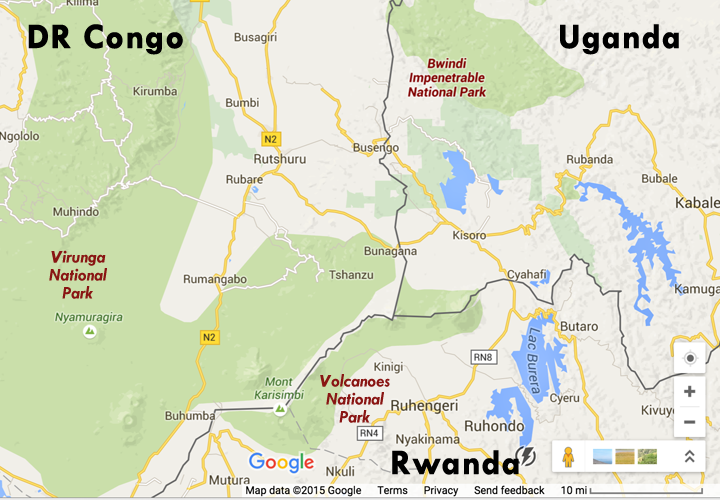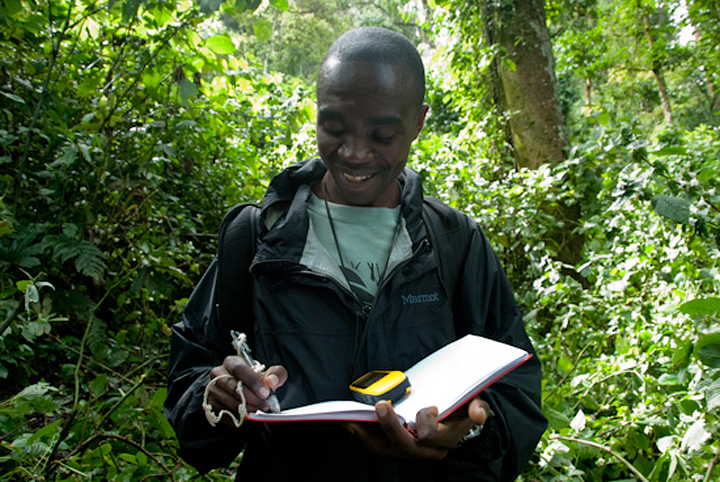New Census of the Virunga Massif Mountain Gorilla Population Underway
By Gorilla Doctors Staff on Wednesday, October 7th, 2015 in Blog.Gorilla Doctors, and the many gorilla conservation organizations working in the region, are eager to learn if and how the Virunga Massif mountain gorilla population has grown, according to the new census which begins today.
“Gorilla Doctors Rwanda Field Vet Dr. Gaspard and Uganda Field Vet Dr. Ricky will both be working in the field during the census” said Director Dr. Mike Cranfield. “Gorilla Doctors has also provided lab space for prepping sample tubes, and our Regional Laboratory Technician, Dr. Method, will be working to sort and duplicate samples as well as running parasite and pathogen studies on the samples collected at our Regional Headquarters in Musanze.”
Greater Virunga Transboundary Collaboration (GVTC), who is leading the effort, issued a press release today, outlining the field work and long-term plans for the 2015-2016 census:
KIGALI, Rwanda – National park authorities in Rwanda, Uganda and the Democratic Republic of Congo (DRC) today began a new population census to determine how many mountain gorillas remain in the Virunga Massif. The census will be carried out collaboratively by scientists and national park authorities from all three States, under the umbrella of the Greater Virunga Transboundary Collaboration (GVTC).
Mountain gorillas are classified by the International Union for the Conservation of Nature (IUCN) as “Critically Endangered” with the total global population estimated at less than 900 individuals split into two isolated populations- one in the Virunga Massif (which straddles the borders of Rwanda, Uganda and DRC) and the other in Uganda’s Bwindi Impenetrable National Park contiguous with DRC’s Sarambwe Nature Reserve.
The new scientific count, referred to as a census, will provide a good estimate of the number of mountain gorillas living in the Virunga Massif today and show how the population has changed since the previous census in 2010 estimated that there were 480 gorillas (habituated and unhabituated) in the transboundary protected area. This will also give scientists and protected area managers a much clearer idea of the status of the total global population.
The census will also provide information on demographics (age and sex ratio) within the Virunga Massif gorilla population, and the location of groups in relation to each other within the transboundary protected area.
During the census, in total over 60 people split into multiple teams will move systematically on foot through the Virunga Massif recording mountain gorilla nest sites and collecting fecal samples, which will be used for genetic analyses. This process, taking several months, will be repeated, in order to have sufficient data on which to calculate the most robust possible estimate of the population.
“The census will require tremendous effort by many partners, but will ultimately yield valuable information to help us assess our past conservation efforts and guide future, collaborative conservation actions,” explains Dr. Muamba Tshibasu Georges, Executive Secretary of the GVTC.
The Greater Virunga Transboundary Collaboration was formally established in September 2015 with the signing of a landmark treaty on transboundary conservation by authorities from Rwanda, DRC and with commitment from Uganda.
“Signing of the recent GVTC Treaty has enhanced transboundary collaboration and also signified political will and commitment from the three countries to conduct the new count of mountain gorillas in the Virunga massif; with provision of security and staff by the three countries, we are certain to have a successful gorilla census in the coming months” Dr. Muamba Tshibasu Georges adds.
Data and sample collection and analyses will continue through 2016 and results from the count will be released by the Greater Virunga Transboundary Collaboration in 2017.”
—
The census is being conducted by the Protected Area Authorities in the DRC, Rwanda, and Uganda (l’Institut Congolais pour la Conservation de la Nature, the Rwanda Development Board and the Uganda Wildlife Authority) under the transboundary framework of the Greater Virunga Transboundary Collaboration.
The census is supported by the International Gorilla Conservation Programme (a coalition of Fauna & Flora International and WWF), Max Planck Institute for Evolutionary Anthropology, Dian Fossey Gorilla Fund International, Institute of Tropical Forest Conservation, Gorilla Doctors, and North Carolina Zoo, with funding from Fauna & Flora International, WWF, and Partners in Conservation at the Columbus Zoo & Aquarium.


 Donate
Donate


